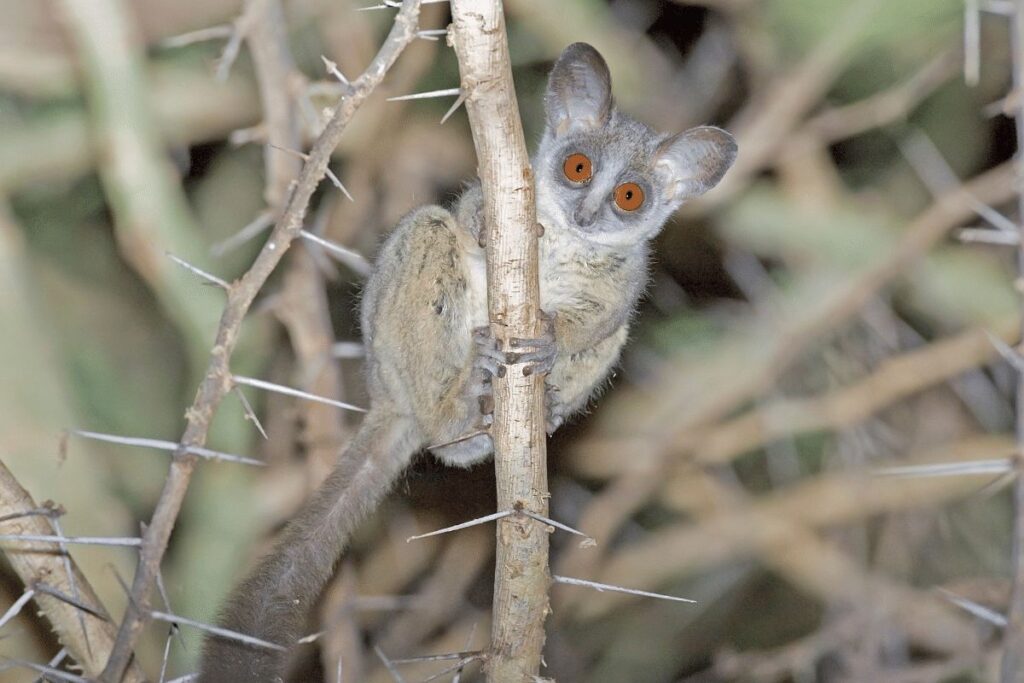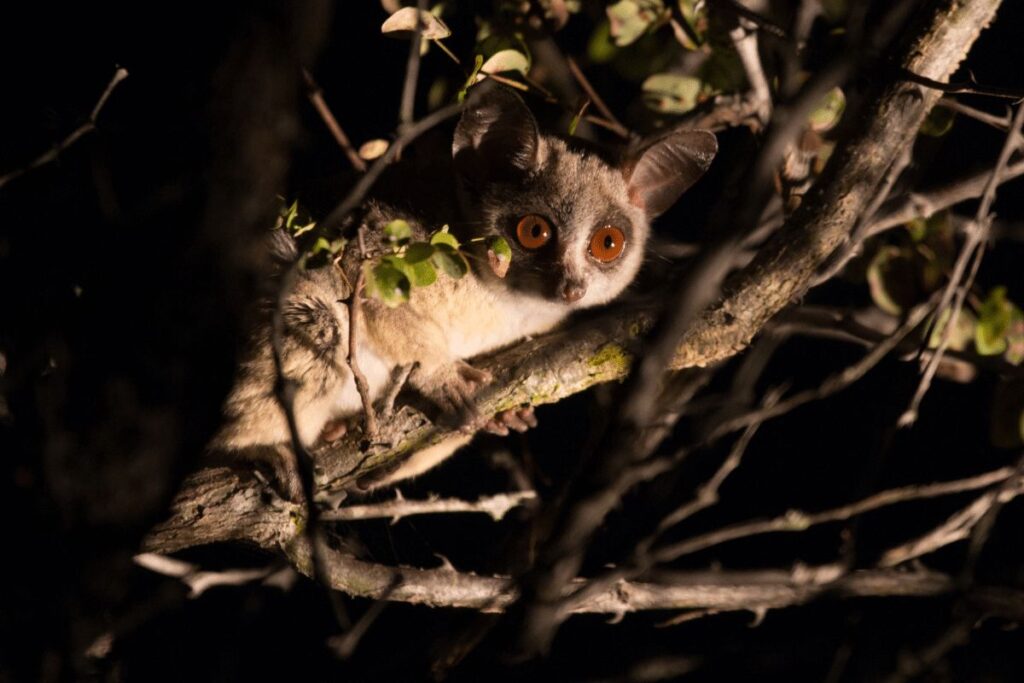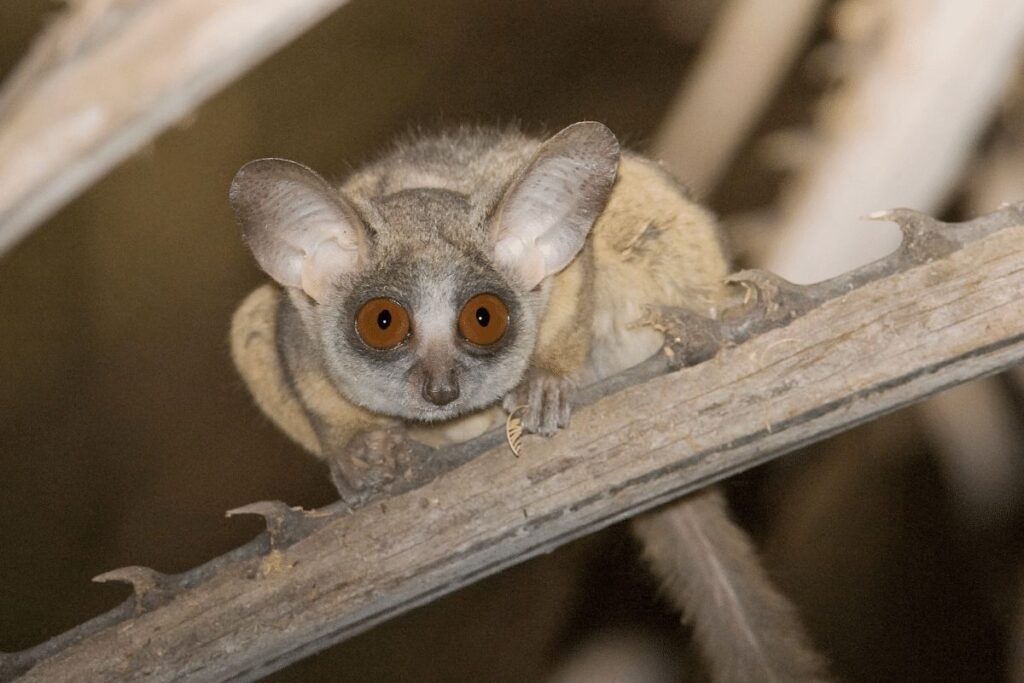Explore the elusive African Bush Baby's life, from treetop antics to predator evasion, in our wild guide
Hey there, wildlife wanderers! Ready to meet the night’s most elusive acrobat? The African bush baby is no larger than your hand, but its nightly escapades are legendary across Africa’s wilds.
In our latest scoop, we’ll leap into their treetop lives, from their quirky behaviors to where you can spy on their aerial antics. You’ll get the lowdown on how they dodge predators, grow up, and where they hang out.
Think of this as your backstage pass to the secret lives of bush babies, right from South Africa’s Kruger to the dense canopies of Kakamega. Gear up, it’s going to be a hoot!
Behavior
Bush babies are fascinating nocturnal creatures that come to life when the sun sets, leaping through trees with astonishing agility and grace. They are master climbers, using their strong hind legs to propel themselves across distances of up to 8 feet (2.5 meters). Bush babies possess specialized, suction-like fingertips and toes that help them cling to tree trunks and branches with ease.
The diet of these captivating creatures primarily consists of insects, fruits, and tree gums. They have a unique adaptation in the form of a toothcomb, which allows them to scrape the gum from trees efficiently. Bush babies also have highly developed vocalizations, emitting a range of sounds such as cries, grunts, and clicks to communicate with other members of their group.
Bush Baby Habitat
Bush babies inhabit the lush forests and dense woodlands of sub-Saharan Africa. They favor regions abundant in vegetation, as it provides the ideal environment for nesting, foraging, and escaping from predators.

They build cozy nests in tree hollows or thick foliage, lining them with leaves and other soft materials to create a warm and comfortable haven.
Bush Baby Life Cycle
Female bush babies typically give birth to one or two offspring after a gestation period of around four months. The young are born fully furred, with their eyes open, but with limited mobility.

They are cared for by their devoted mother in a nest, who leaves them alone during the night to forage for food. As they grow, the young bush babies begin to accompany their mother on nightly foraging trips, honing their skills and learning to navigate the complex world of the African forest.
These enchanting creatures reach sexual maturity at around nine months to one year of age and can live up to 14 years in the wild. They form complex social structures, often living in groups consisting of several adult females, their offspring, and a single adult male.
Bush Baby Predators
Despite their adorableness, bush babies face numerous predators in the wild. Large birds of prey, snakes, and small carnivorous mammals such as genets and mongooses are all threats to these tiny primates.

To avoid predation, bush babies rely on their remarkable camouflage, impressive agility, and keen senses to detect potential danger. They are known to freeze or conceal themselves in dense foliage when they sense a predator nearby.
Bush Baby Sightings
Although bush babies can be elusive, there are several national parks across Africa where your chances of spotting these alluring creatures are higher. Some of the best national parks to observe bush babies in their natural habitat include:
Kruger National Park, South Africa
As one of Africa’s largest and most famous game reserves, Kruger National Park provides an unparalleled opportunity to spot bush babies.
Embark on a thrilling night drive or guided bush walk to witness these delightful creatures bounding through the trees under the moonlit sky.
Serengeti National Park, Tanzania
Renowned for its vast savannas and thriving wildlife, the Serengeti also offers a chance to see bush babies in action.
Explore the park’s wooded areas, particularly after dark, to increase your chances of encountering these nocturnal primates in their element.
Bwindi Impenetrable National Park, Uganda
Although primarily known for its majestic mountain gorillas, Bwindi Impenetrable National Park is also a great place to find bush babies.
The park’s dense forests create an ideal habitat for these elusive creatures. Opt for a guided night walk to immerse yourself in the mystical forest and seek out these enchanting animals.
Hluhluwe-Imfolozi Park, South Africa
This stunning reserve, with its rolling hills and diverse ecosystems, offers an array of opportunities to see bush babies.
Set out on an adventurous night drive or guided walk to increase your chances of spotting these captivating creatures among the foliage.
Kakamega Forest National Reserve, Kenya
As one of the last remaining rainforests in Kenya, Kakamega Forest is home to a variety of primate species, including bush babies.
Participate in a guided night walk to explore the forest’s nocturnal world and uncover the secretive lives of these fascinating animals.
Tarangire National Park, Tanzania
Though famous for its large elephant population, Tarangire National Park also provides an excellent setting for bush baby sightings.
The park’s vast, wooded areas and swamps create a haven for these charming primates. Night game drives offer a unique opportunity to observe bush babies in their natural habitat.
Conclusion
The African bush baby is an intriguing and endearing primate that has captured the hearts and imaginations of animal enthusiasts worldwide.
With their extraordinary habits, captivating life cycle, and alluring appearances, these nocturnal creatures are a fascinating symbol of Africa’s incredible biodiversity.
To experience the magic of bush babies firsthand, consider a visit to one of the national parks mentioned above and immerse yourself in the enchanting world of these beguiling primates.







